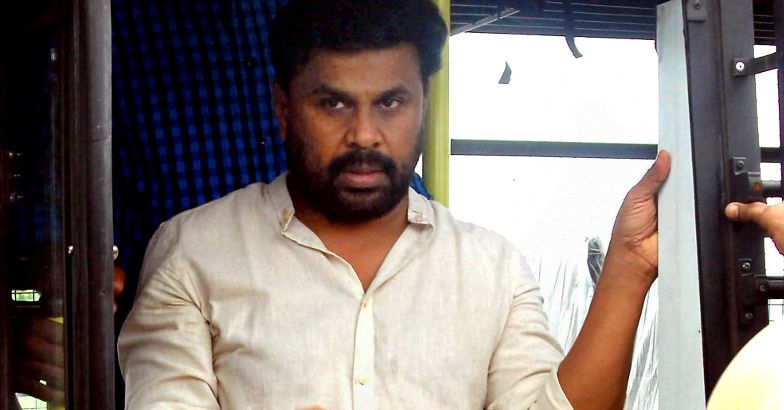In Vineeth Srinivasan’s films, cursory and subjective experiences come wearing a translucent cloak of enduring beauty. In the former half of Hridayam, a boy rides a motorbike into the college campus. When his friend complains about its penetrating noise, he says, “It goes straight into the heart of young women!” His tone and body language are dramatic. The bike is one of the dozens of things and experiences Hridayam casually oversells, bestowing them with unreasonable high praise. In the opening scene, a stranger on a Chennai-bound train tells hero Arun Neelakandan (Pranav Mohanlal) and his friend that the college they will spend the next four years in has the most beautiful campus. He looks prescient in the centrally composed close-up shot when he says, “Chennai will leave an indelible mark on you.”
Hridayam follows Arun Neelakandan over ten years, from his late teens until his late twenties, looking at his friendships and romantic affairs, his brief descent into anarchy, his transformation into a family man and successful commercial photographer. There are not many surprises in the story. The most intense conflict Arun must fight is the haunting memory of Darshana (Darshana Rajendran), a perky classmate he falls in love with in the first year of college. Their affair ends as soon as it begins, but Arun stays abnormally committed to the breakup turmoil.
Vineeth’s style of filmmaking, which has a surprisingly big fandom, is radically different from the best of the Malayalam new wave. He loyally sticks to mainstream cinematic clichés, drawing narrative elements from other movies and pop-culture byproducts like memes. Arun, head over heels in love with Darshana, immediately finds a rival – a filmy villain with exaggerated mannerisms – in a senior student. Arun is a multipotential hero, while his best friend at college, a dark-skinned young man with a rustic sense of humour, is the butt of many jokes. He is the kind of fool who humiliates himself in front of a beautiful woman by taking a sip from the finger bowl at a restaurant.
For a film built like a coming-of-age drama, there is little character journey in Hridayam. Arun clings to teen nostalgia in an unhealthy fashion. In the latter half of the film, he falls in love with Nithya (Kalyani Priyadarshan) in the same way he had fallen in love with Darshana. Vineeth stitches together staple feel-good moments and fifteen songs that play to the gallery aggressively. When depicting the marital bliss of Arun and Nithya, the film unabashedly performs brand promotions, pretending that the line that separates feature films and television ads doesn’t exist.
Kalyani Priyadarshan is building a fine career out of understated acting, arresting screen presence and enviable comic timing. Nithya is a generic character, a happy-go-lucky woman who slides into a conventional marriage and confines her entire life to the four walls of Arun’s apartment. But Kalyani expands Nithya into a fascinating bundle of joy. The effortlessness of her performance makes the strained quality of Pranav Mohanlal’s acting more pronounced. Darshana Rajendran, an unusual choice for eye candy, turns Darshana into a character worth the viewer’s sympathy even when she is being whimsical.
Vineeth, despite his affinity for stories about youngsters, stays strictly apolitical. The film is based on Arun’s “crazy love” but the lovers stay largely platonic, as though they are mindful of the moral standards of the film’s target audience. In an unintentionally funny scene that presents the film’s views on casual sex, couples assemble neatly in a row at a Kochi park to make out under the shade of colourful umbrellas.
At the beginning of Arun’s anarchic phase, during which he rags his juniors violently and closes in on transforming into a toxic boyfriend, the camera gives a glimpse of a copy of Das Kapital on his table. At the end of the phase, he bursts into tears in the well-equipped washroom of a well-off classmate, longingly staring at the branded products. He embraces his college textbooks, like an institutional antidote to Marx’s book.
The film displays its revolutionary fervour in an extended sequence set in a Chennai slum, the home of Selva, Arun’s studious classmate who is leading a quiet agitation through education. This part looks like a shallow hat-tip to Tamil new-wave political movies like Pariyerum Perumal. Vineeth refrains from delving into Selva’s social context but uses this sequence and its sub-characters as lazy tear-jerkers. In a cheerful montage, he presents the students from an eclectic mix of social backgrounds, studying together and sharing food. Arun gets ahead in his studies, but what profound effect does Selva have on him? The lead characters, who come from upper-class homes, go back to plush condos and their filtered existence, and the slum sequences, in hindsight, resemble CSR-driven off-beat picnics.
Recommended
Hridayam might be Vineeth’s most ambitious and daring work in terms of scale, but in essence, it is not much different from his previous films. He continues to dabble in the familiar and the mediocre, endorsing a false sense of hope about reality. His characters engage in relentless talking, but the absence of superior writing and cinematic aesthetics fail to turn their everyday experiences universal and inspiring. There are words aplenty, but they only turn feelings into stones.
*****
This Hridayam review is a Silverscreen original article. It was not paid for or commissioned by anyone associated with the movie. Silverscreen.in and its writers do not have any commercial relationship with movies that are reviewed on the site.



